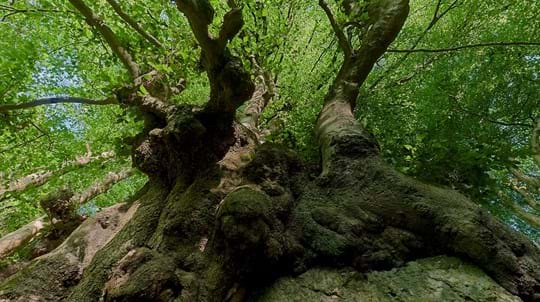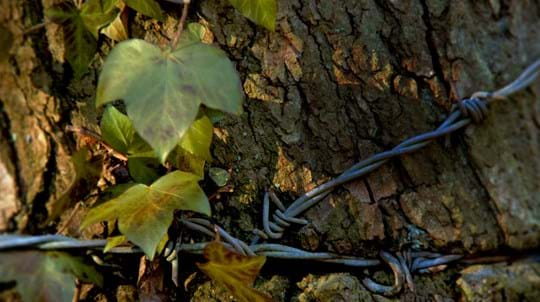
Campaign in your community
Local communities taking action is the most effective way to protect woods and trees. Need help? Check out our useful resources.
Get started today
Campaigner - Woods Under Threat
Decisions to cut down trees should not be taken lightly, though sometimes it may be the only option, especially where safety is concerned. Whether you want to fell or protect from felling, protection and preservation laws can be complex. Our guide will help you get to grips with best practice and suggests alternatives to consider before anyone reaches for the axe.
It’s illegal to fell a tree if it will affect breeding birds.
If you’re in any doubt about the legalities of undertaking works to a tree, always seek advice from your local council or the relevant government department:
If you own your home, you don’t need permission to fell a tree that’s solely within your garden unless it’s:
If you rent your home, you must get the landlord’s permission first.
Any injury or damage caused to a neighbour or their property from tree works or felling is your liability, for example if the tree falls in an unexpected direction onto a shed.
If the tree trunk is in your garden, neighbours have a right to cut overhanging branches but they remain your property.
Where a tree must be felled outside of a private garden, you may need a felling licence. If the tree, or trees, amount to 5 cubic metres of timber by volume, it’s usually an offence to fell without one.
The relevant government department will discuss conditions with you before issuing a licence. These are usually around replanting the area and maintaining the trees for a period of time. Licences for thinning woodland don’t have a restocking condition.
Over 2,300 species are known to associate with oak trees.
Felling any tree will have implications for people and wildlife and should be a last resort. But we appreciate it’s sometimes necessary where a tree poses a risk to safety because of its location or condition, or is shown to be damaging property. But even where trees are causing a real problem, it’s worth exploring other options. For example, pollarding and pruning can remove dangerous hanging branches or reduce the weight or impact of a tree without killing it.
Talk to a tree adviser or consultant about how to best manage a problem tree, and find a quality assured tree surgeon if you proceed with any major works. They will make sure the problem is sufficiently resolved while saving as much of the tree as possible, and they have liability insurance should anything go wrong too.
To compensate for the lost tree, we recommend planting at a ratio of at least 3:1, or as agreed in the felling licence conditions - although it will take years to match the benefits of the felled tree.
If you’re cutting down a tree with a TPO (with permission), you must replace it. If the original tree grew too big, consider planting smaller species that won’t cause the same issues.
Anyone can request a TPO. Find out if a tree already has one or apply for one by contacting the tree officer at your local council.
A TPO is a written order from a local planning authority to protect specific trees or whole woodland areas. The aim is to protect trees that have amenity value for the public.
An application must be submitted before felling or managing a tree with a TPO. That application is subject to a consultation period during which people can submit objections.
If a tree you know and love is at risk, ask the council to put an emergency TPO on it. This prevents the tree being chopped down or tampered with while the council investigates further.
Some trees grow in legally protected areas. For example, some ancient woodland and ancient or veteran trees are within areas with statutory conservation designations.
To carry out work in these areas, the designated statutory body must give permission unless it’s an emergency. Surveys should assess the ecological value and potential damage that may occur – including to trees - both during and after the work.
Each devolved nation has its own official authority to oversee this process:
Local planning authorities can designate Conservation Areas to protect a variety of natural and man-made features. Trees in conservation areas are afforded protection and will require permission before felling. TPOs can also be served to trees in a Conservation Area.
Even when not covered by a TPO, a similar process must be followed before work goes ahead. This includes notifying the council of the proposed works, giving time for public comments and the opportunity to confer a TPO on the tree or trees.
There are some exemptions. Tree work can go ahead if it involves:
Without permission, it’s an offence to cut down, uproot or wilfully destroy any trees:
Those who damage or carry out work without permission on a tree with a TPO or in a Conservation Area may be:
Serious offences may be escalated to Crown Court trial and result in an unlimited fine. In Northern Ireland, the fine can also be unlimited depending on the offence.
Fines for breaching felling licences can vary depending on the country and offence. Wales is a fine of up to £2,500 or twice the value of the trees, whichever is higher. In Scotland, it's up to £5,000 per tree, and a criminal record for all involved in the felling. England and NI don't specify a maximum amount.
If you suspect a tree has been felled illegally, contact your local planning authority or the relevant government department:

Local communities taking action is the most effective way to protect woods and trees. Need help? Check out our useful resources.
Get started today
Visiting woods
Ancient trees need special care and protection. There are thousands of ancient trees in the UK and we need your help to tell us where they are with the Ancient Tree Inventory.

Protecting trees and woods
Have you found a possible threat from development to an ancient wood or tree? Let us know - we could help.